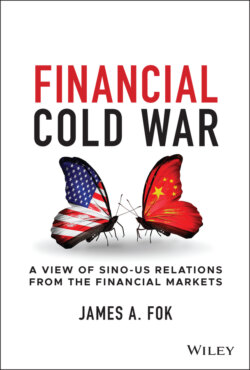Читать книгу Financial Cold War - James A. Fok - Страница 15
The Financial Path Out of Conflict
ОглавлениеThe evolution of markets has been a major civilising force for humanity. Financial markets provide a vital means for capital to be allocated to where it can be most productively used and have enabled the sharing of risks, such that mankind has been able to undertake giant ventures beyond the capacity of any individual or small group. This has contributed to a reduction in conflict and to huge advances for humankind.
Nevertheless, markets operate within institutional frameworks and are subject to the incentives that they create. When policies are calibrated to encourage competition and foster enterprise, markets can be powerful drivers of innovation and progress. Financial markets are complex ecosystems, however. Poorly designed incentive structures and lax regulatory enforcement can give rise to serious imbalances. When imbalances occur, their impact can stretch far beyond the financial sphere, with significant social, political and diplomatic repercussions.
Since finding resolutions must begin with understanding, this book reviews in detail the history of how the global financial system today has come about, as well as the ideological and practical underpinnings of different financial and economic policies.
Part One of the book focuses on the US. It first gives an account of how the dollar came to dominate the global financial system, and explains the policies, regulations, infrastructure and market conventions that perpetuate the dollar's global role. It then questions whether the costs of that role to both the US and the rest of the world may now outweigh the benefits.
Part Two focuses on China. Given the very long historical perspective through which Chinese policymakers frame policy, it is necessary to have a broad perspective of Chinese history to appreciate the context of today's financial and economic policies. This part therefore first takes readers on a whistle-stop journey through six centuries of Chinese history, from the height of China's relative global economic power during the Ming Dynasty (明朝, 1368–1644) through to the ravages of the Cultural Revolution (文化大革命, 1966–1976) and the country's economic climb back in the decades since. It then goes on to give an account of the development of China's modern financial markets and examines the financial and economic challenges facing the country today.
Part Three examines the true nature of the current Sino-US conflict and possible ways to reduce tensions between the two countries. It first critically assesses the New Cold War narrative and looks at the financial and economic sources and dimensions of conflict. It then looks at the role of financial markets today and how, in many instances, contemporary policies, regulations and incentives have subverted the proper functioning of markets. The final chapter concludes with a discussion of potential reforms to US and Chinese policies and to the global monetary system that could help rebalance the world economy and de-escalate Sino-US tensions.
The sheer scale of the imbalances that have built up means that they cannot be quickly unwound and many of the challenges are not well understood. Reforms will require key decision makers in China, the US and other major nations to put their heads together, seek truth from the facts, and cooperate with each other in designing appropriate policies. It will be a daunting task. However, for the sake of our future peace, stability and prosperity, it is a task that we can no longer put off.
